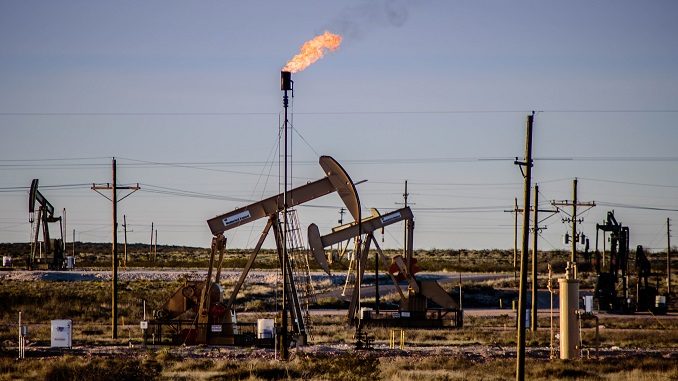
Oil prices climbed sharply Thursday as tensions in the Middle East continued to spiral and the dollar fell, extending a period of high volatility for crude, The Wall Street Journal reported.
Brent crude, the global benchmark, was up 2.6% at $63.45 a barrel on London’s ICE Futures exchange. On the New York Mercantile Exchange, West Texas Intermediate futures rose 2.9% to $55.53 a barrel.
Iran’s Revolutionary Guard said early Thursday it had shot down a U.S. drone over its territory. That claim came hours after the U.S. military said a Saudi desalination plant was struck by a missile that appeared to come from Yemen.
“The market has been largely underpricing ongoing Middle Eastern tension for some time now but these growing tensions between Iran and the U.S., and Iran and the Saudis bring it back to center stage for many of us,” Warren Patterson, commodities strategist at ING, told the Journal.
These developments mark the latest in a series of flashpoints in the Middle East, with tensions ratcheting up over recent weeks, with Saudi Arabia and the U.S. on one side, and Iran and Houthi Yemenis on the other, the Journal adds.
Oil prices received a sharp boost last week, after attacks on two tankers in the Gulf of Oman, which neighbors the Strait of Hormuz, the thoroughfare for a third of the world’s shipped oil. In May, prices jumped after attacks on Saudi pumping stations and its East-West pipeline.
Hostility between Saudi Arabia and Iran has come against the backdrop of U.S. sanctions aimed at driving Iranian oil exports to zero. Iran has attempted to evade those strictures, while also repeatedly threatening to shut down the Strait of Hormuz if sanctions aren’t lifted.
Flare-ups in the region have added to volatility in oil prices, providing shock boosts in a period of anxiety over the health of global economic growth.
The International Energy Agency, the Energy Information Administration, and Organization for Petroleum Exporting Countries have all recently said that weakening growth, partly driven by the U.S.-China trade spat, will stymie oil demand in the coming months.




Be the first to comment